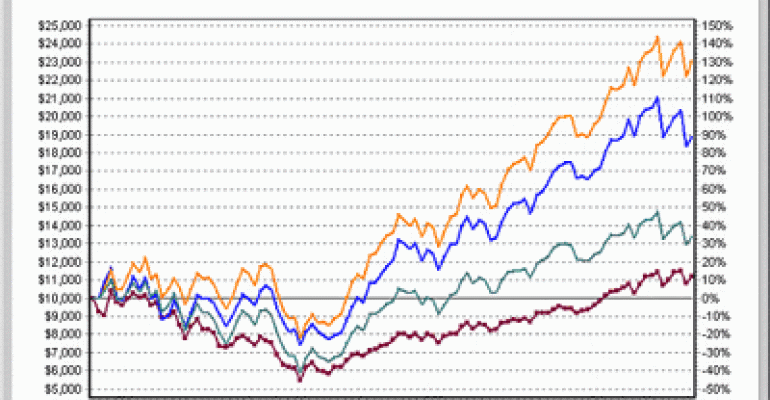I’m sure that there are a lot of people out there that have experienced the pleasure of waking up and seeing that a covering broker upgraded their rating on one of your stocks. I’m also guessing that you have probably experienced the opposite and saw one of the brokers downgrade your stock, too. While nobody can perfectly guard against downgrades (or forecast all upgrades), it’s important to know how the market reacts so you can stay in your upgraded winners (or buy if you’re on the fence), and consider getting out if a downgrade comes your way.
One thing I like doing when I’m screening for new stocks is to look for companies that have recently seen a broker-rating upgrade. This is because tests have proven that stocks with broker-rating upgrades outperform those that don’t get upgraded, and further outperform than those stocks that get downgraded.
By how much?
I created three screens and ran some tests. Each screen used a price and volume qualifier of >= $5 and >= 50,000 shares traded daily (average 20-day volume). I then added my Average Broker-Rating Change (ABR) filter.
Screen 1 had no upgrades or downgrades: The ABR remained the same (i.e., no change).
Screen 2 looked for only those companies that received upgrades (positive changes in their average-broker rating).
Screen 3 screened for only those stocks that have been downgraded (i.e., negative change in their average broker rating).
The tests confirmed what I had already suspected, but the magnitude was a lot larger that I had expected. I ran four separate tests over the last eight years (2000 thru 2007) on a “combo” strategy with the Research Wizard’s Advanced Back-Tester to see just how different the results would be with this different filter. (Each test used a four-week rebalancing period, and was tested over multiple start dates to verify the robustness of the results.)
Results

The screen with no upgrades or downgrades—their rating, whatever it was, stayed the same—produced on average of a 79.6-percent total compounded-gross return over the last eight years (or an average compounded annual growth rate of 7.6 percent).
The screen with only positive broker-rating upgrades produced an average total compounded-gross return of 111.0 percent, for a compounded annual-growth rate of 9.8 percent.
The screen with only downgrades, however, performed significantly worse, with an average total compounded-gross return of only 30.8 percent, for a compounded annual- growth rate of only 3.4 percent.
The screen with the positive broker-rating changes performed nearly three times that of the downgrades screen. And while 9.8 percent doesn’t seem like a big jump from 3.4 percent, you can see that by consistently focusing on upgraded stocks, it means the difference between more than a 100-percent return after 8 years in versus less than a third of that.
Below is an example of one of the tests I ran in the Research Wizard’s Advanced Back-Tester. In this test, the blue line represents the screen with no change in the average broker rating; the orange line represents the screen with the broker-rating upgrades; and the turquoise line shows the screen with the downgrades. (The maroon line represents the S&P 500.)
After running the upgrades screen, I added the Zacks Rank of 1 to it, and more than doubled the returns, taking it from a 9.8 percent compounded annual-growth rate to over a 22.9-percent growth rate.
Here’s three stocks from that list for this week (2/5/08):
CSIQ Canadian Solar, Inc.
HGIC Harleysville Group
NFLX Netflix, Inc.
Sign up for your free trial of the Research Wizard and start using this idea in your own screens and start putting your own ideas to the test. It’s easy to do, and you’ll be on your way to picking better stocks immediately. Check out http://researchwiz.zacks.com for more information.
Disclosure: Officers, directors and/or employees of Zacks Investment Research may own or have sold short securities and/or hold long and/or short positions in options that are mentioned in this material. An affiliated investment advisory firm may own or have sold short securities and/or hold long and/or short positions in options that are mentioned in this material.




